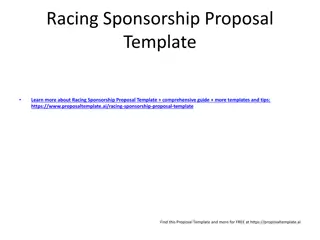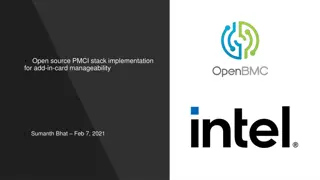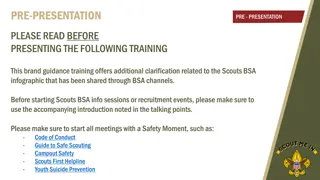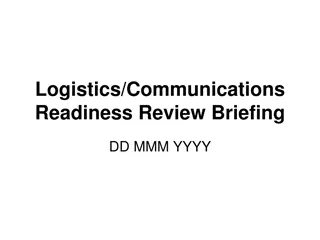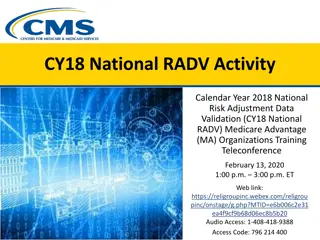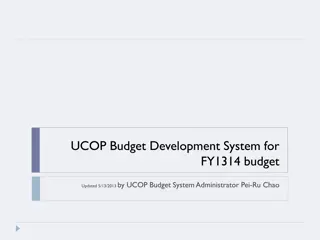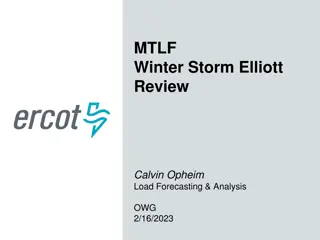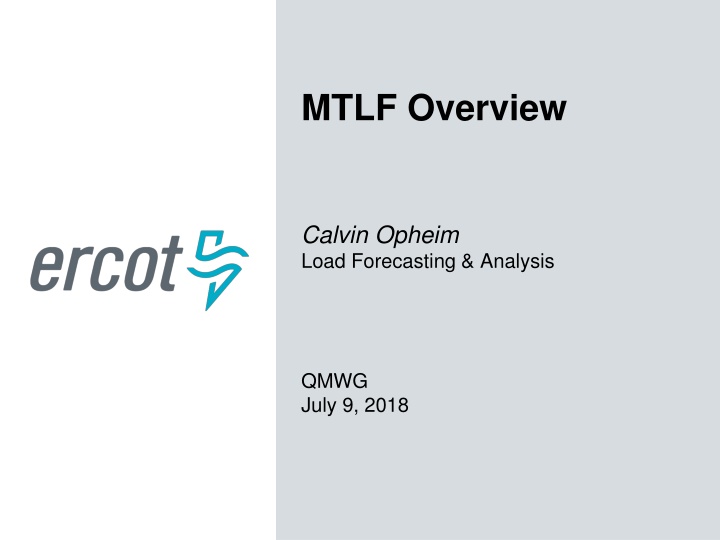
Calvin Opheim Load Forecasting and Analysis Overview
Explore the different MTLF models available for load forecasting and analysis, including detailed notes on models A3, A6, E, E1, and E2. Learn about the strengths, weaknesses, and nuances of each model to make informed decisions for forecasting demands based on historical data and weather conditions.
Download Presentation

Please find below an Image/Link to download the presentation.
The content on the website is provided AS IS for your information and personal use only. It may not be sold, licensed, or shared on other websites without obtaining consent from the author. If you encounter any issues during the download, it is possible that the publisher has removed the file from their server.
You are allowed to download the files provided on this website for personal or commercial use, subject to the condition that they are used lawfully. All files are the property of their respective owners.
The content on the website is provided AS IS for your information and personal use only. It may not be sold, licensed, or shared on other websites without obtaining consent from the author.
E N D
Presentation Transcript
MTLF Overview Calvin Opheim Load Forecasting & Analysis QMWG July 9, 2018
Outline of Todays Presentation 1) MTLF Models 2) Input Variables 3) Forecast Horizons 4) Questions 2 PUBLIC
MTLF Models 7 models are currently available 5 are internally developed Named E, E1, E2, E3, and M 2 are legacy black box models from GE Named A3 and A6 4 PUBLIC
MTLF Models A3 Notes Uses recent history to update the model coefficients Prone to significantly over-forecast summer demands on very hot days Prone to significantly over-forecast winter demands on very cold days 5 PUBLIC
MTLF Models A6 Notes Uses recent history to update the model coefficients Only uses one weather station per weather zone Prone to significantly over-forecast summer demands on very hot days Prone to significantly over-forecast winter demands on very cold days 6 PUBLIC
MTLF Models E Notes Considered to be the overall best model for Day Ahead Slow to change during shorter forecast horizons (1 4 hours ahead) Calibrated based on most recent historical days (look back at the last 7 14 days) Tuned based on forecast performance during the current day (look back at the last 3 hours) 7 PUBLIC
MTLF Models E1 Notes Designed to be the most responsive model to changing conditions Designed to perform well on very hot and very cold days Does not do well on mild days Can result in a jagged forecast shape Tuned based on forecast performance from the last hour 8 PUBLIC
MTLF Models E2 Notes Looks more at rain and cloud cover More reliant on the weather forecast for the next 14 hours Best at capturing Winter/Spring/Fall rain type and cloud cover patterns Tendency to under forecast very hot conditions Calibrated based on most recent historical days (look back at the last 7 14 days) Tuned based on forecast performance during the current day (look back at the last 3 hours) 9 PUBLIC
MTLF Models E3 Notes Provides more weight on weather for shorter term forecasts Relatively slow to change Input from additional weather stations Calibrated based on most recent historical days (look back at the last 7 14 days) Tuned based on forecast performance during the current day (look back at the last 3 hours) 10 PUBLIC
MTLF Models M Notes The average of the 6 other models Historically has shown to be the best Day Ahead forecast Provides a good benchmark for other models 11 PUBLIC
MTLF Models Day Ahead MAPE 5.0% 4.5% 4.0% 3.5% 3.0% 2.5% 2.0% 1.5% 1.0% 0.5% 0.0% January February March April May June Active A3 A6 E E1 E2 E3 M 12 PUBLIC
MTLF Models Active Forecast 35 30 25 20 Percent 15 10 5 0 A3 A6 E E1 E2 E3 Model Notes [1] as of June, 2018 [2] The M model was not available to the Operators 13 PUBLIC
Weather Zones 15 PUBLIC
Original Weather Stations 16 PUBLIC
Current Weather Stations 17 PUBLIC
Variables Model Day Of Week X X X X X X Holiday X X X X X X Daylight Savings X X X X X X Season X Dry Bulb X X X X X X Dew Point X X X X X X Cloud Cover X Wind Speed X X X X X Heat Index X E E1 X X X X X X X X E2 E3 A3 A6 Sunshine Minutes Model Wind Chill Wetbulb Solar Irradiance Relative Humidity Precipitation HDD CDD X X X X *E *E E E1 X X X X X X X X X *E *E *E *E E2 X X X E3 X X A3 A6 Note *E indicates used in energy model only 18 PUBLIC
Previous Load Values Use previous observed load values Examples: to predict the load at 5 pm, use the actual load from 4 pm Referred to as an autoregressive model 19 PUBLIC
Forecast Horizons Mid-Term Load Forecast (MTLF) Hourly forecast for the next 7 days Hour Ahead/Real Time Forecast Day Ahead Forecast 21 PUBLIC
Flowchart Final Forecast Tuning Adjustment Blended Forecast Backcast Adjustment Hour Ahead Models (autoregressive) Day Ahead Models (non autoregressive) 22 PUBLIC
Real Time / Hour Ahead Forecast Created every hour Hourly forecast for the next 7 days beginning with the next hour Hour Ahead models include lagged load values The actual load from the previous hour is the most significant variable to predict the load for the current hour. Example: to predict the load at 5 pm, use the actual load from 4 pm Referred to as an autoregressive model 23 PUBLIC
Day Ahead Forecast Created at 2 pm every day Hourly forecast for the next 7 days beginning tomorrow Day Ahead models do not include any lagged load values The last actual load value would be for 1 pm today. This is not a significant variable for predict the load for tomorrow 24 PUBLIC
Summary The E, E2, and E3 models consist of two different forecasting models (hour ahead and day ahead) E1 only uses day ahead models A3 and A6 only use a single model. They do not have a backcast feature. They recalculate the model coefficients based on recent performance. This is not the same as the tuning feature mentioned on the previous slide. 25 PUBLIC
Summary The hour ahead models are used to forecast the next few hours (1 to 4 hours). Then the day ahead models are used. Day ahead models can incorporate adjustments based on performance from prior days (backcast) The hour ahead and day ahead models can be blended together The forecast can be adjusted based on the most recent forecast performance (tuning) 26 PUBLIC
Questions? 27 PUBLIC

![❤[READ]❤ Deep Space Craft: An Overview of Interplanetary Flight (Springer Praxis](/thumb/21511/read-deep-space-craft-an-overview-of-interplanetary-flight-springer-praxis.jpg)



